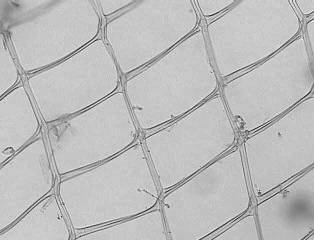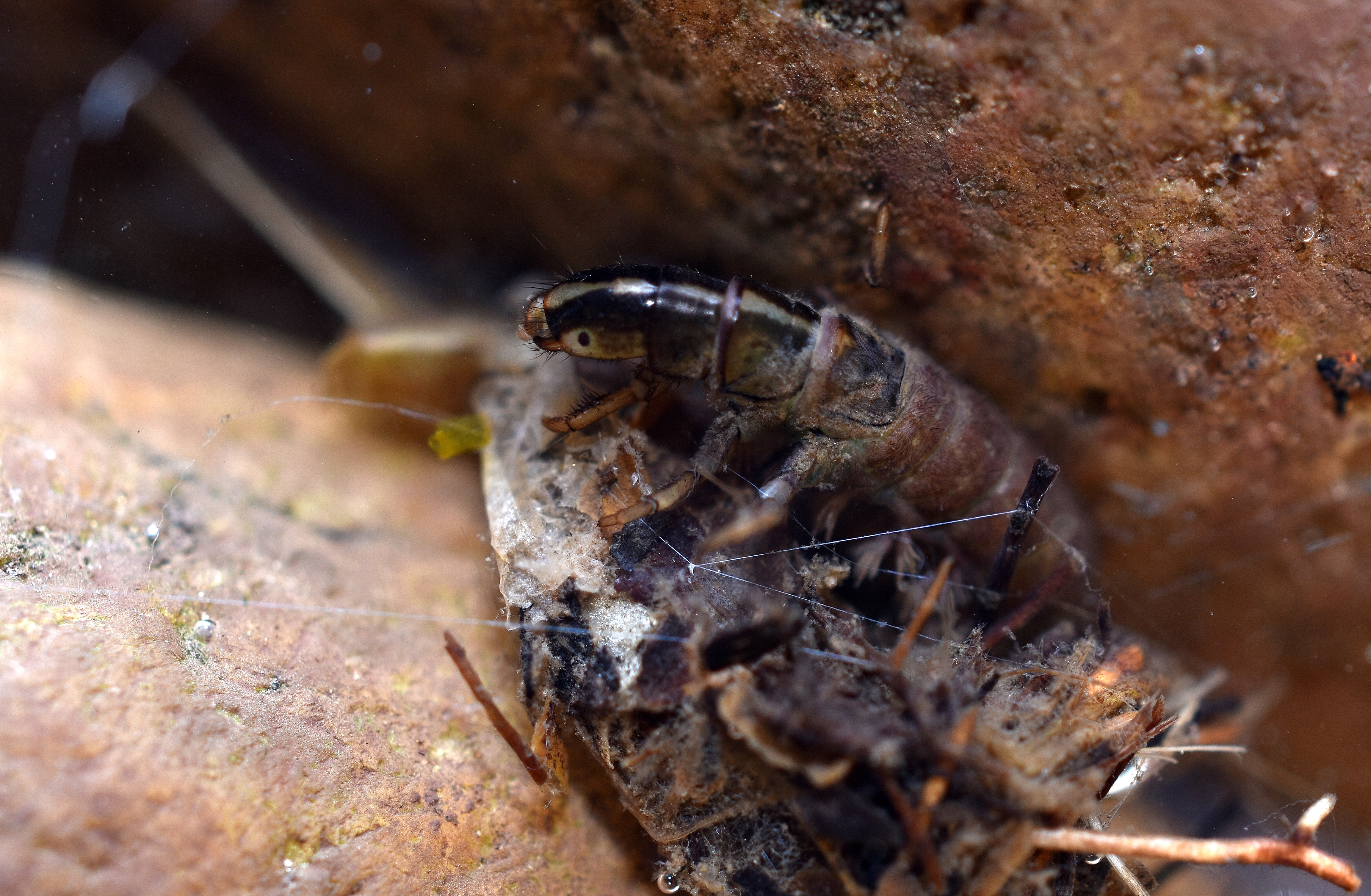Animal Ecosystem Engineers and Facilitation
Ecosystem engineers are organisms that modify or maintain their physical environment. We study the mechanisms that regulate where and when ecosystem engineers influence physical processes in stream habitats. We focus our research on aquatic animal engineers such as net-spinning hydropsychid caddisfly larvae (Trichoptera:Hydropsychidae). Hydropsychid caddisflies weave silk threads together into a web that they use to filter-feed, much like a spider does in the air. The silk threads are attached to rocks in the riverbed and can bind together and stabilize these rocks during floods. The silk also slows down water velocity and reduces hyporheic exchange. We seek to identify the biological (organism density, community composition, and species traits) and physical (grain size, discharge, and water temperature) thresholds where these types of biotic engineering effects are strongest. The goal of this work is to incorporate more realistic biological communities with a diverse suite of coexisting engineers into predictive physical process models. We also use meta-analytical approaches to synthesize research on ecosystem engineers and identify how changes to the environment resulting from ecosystem engineering activities can facilitate and positively influence other species.
Watch our free documentary videos about silk net-spinning caddisflies on Vimeo at the following links:
Crossing the Ecotone - vimeo.com/894714119
Caddisflies, Engineering an Ecosystem - vimeo.com/273597362


Example publications
Check out the publications page for additional information.
- Albertson, L. K., M. J. MacDonald, B. B. Tumolo, M. A. Briggs, Z. Maguire, S. Quinn, J. A. Sanchez-Ruiz, J. Veneros and L. A. Burkle. 2021. Uncovering patterns of freshwater positive interactions using meta-analysis: Identifying the roles of common participants, invasive species, and environmental context. Ecology Letters 24:594-607. [View as PDF]
- Tumolo, B. B., L. Calle, H. E. Anderson, M. A. Briggs, S. Carlson, M. J. MacDonald, J. H. Reinert, and L. K. Albertson. 2020. Toward spatio-temporal delineation of positive interactions in ecology. Ecology and Evolution 10: 9026- 9036. [View as PDF]
- Albertson, L. K., L. S. Sklar, S. D. Cooper, and B. J. Cardinale. 2019. Aquatic macroinvertebrates stabilize gravel bed sediment: A test using silk net-spinning caddisflies in semi-natural river channels. PLoS ONE 14(1):e0209087. [View as PDF]
- Albertson, L. K., and M. D. Daniels. 2018. Crayfish ecosystem engineering effects on riverbed disturbance and topography are mediated by size and behavior. Freshwater Science 37(4):836-844. [View as PDF]
- Albertson, L. K., and D. C. Allen. 2015. Meta-analysis: Abundance, behavior, and hydrologic energy shape biotic effects on sediment transport in streams. Ecology 96(5):1329-1339. [View as PDF]
